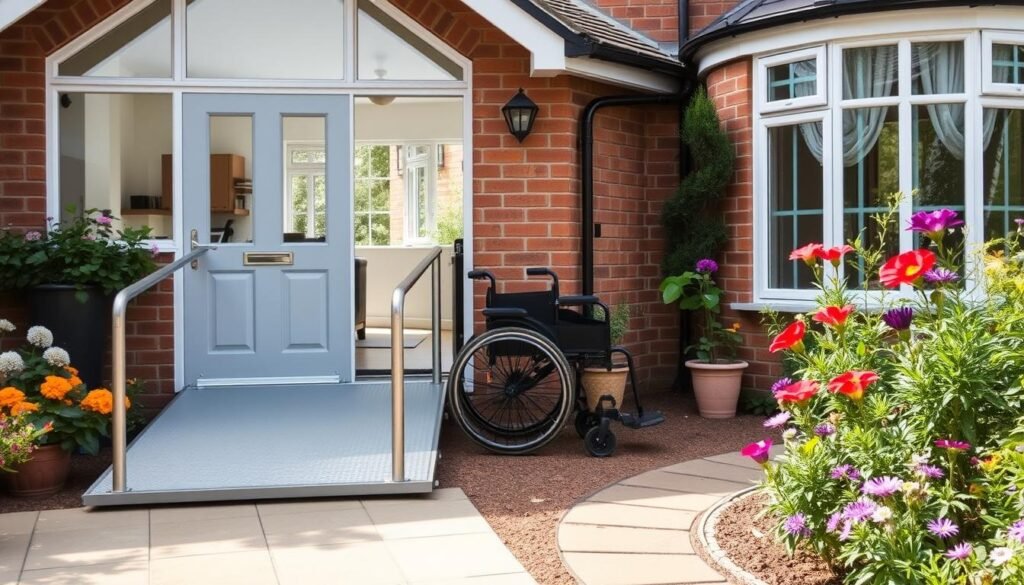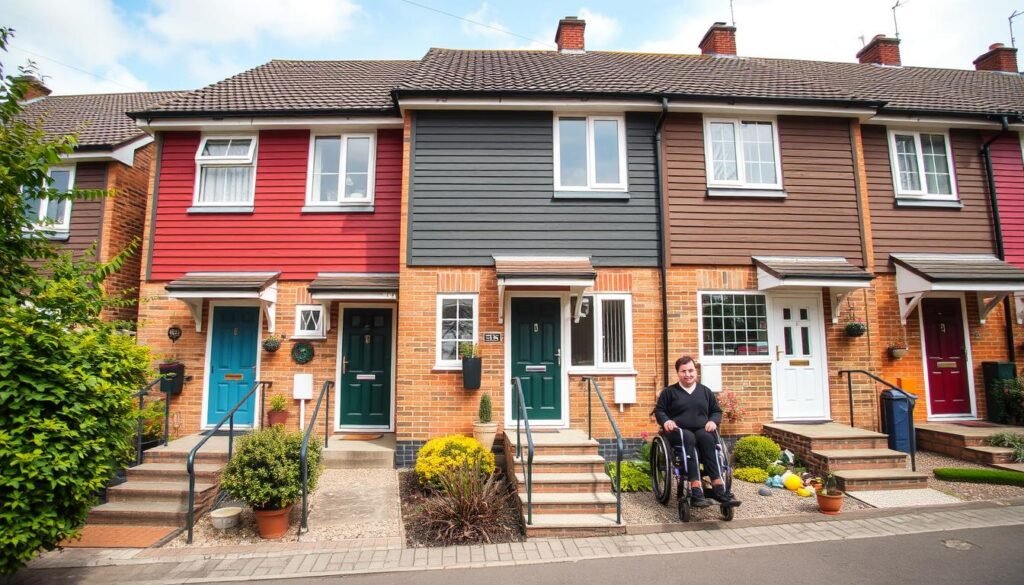Are you a landlord unsure about renting to disabled tenants? With 16 million people in the UK living with a disability, it’s key to know your duties. This guide will show you how to make your housing accessible and treat all tenants fairly.
The Equality Act 2010 outlines what landlords must do for disability rights and making reasonable changes. Did you know only 7% of homes in England are accessible? This shows the need for more inclusive housing. As a landlord, you can help by making your rentals more welcoming to disabled people.
Knowing your legal duties is the first step. This guide will guide you on making changes, dealing with tenant requests, and the costs of accessible housing. We’ll look at common changes like making entries wider and adjusting interiors to welcome disabled tenants.
Key Takeaways
- 24% of the UK population has a disability
- Landlords must make reasonable adjustments under the Equality Act 2010
- Only 7% of homes in England provide basic accessibility features
- One in three disabled people in private rentals live in unsuitable accommodation
- Adapting a home for disabled access costs around £20,000 on average
- The Disabled Facilities Grant can provide up to £25,000 for necessary adaptations
- Failure to make required changes can lead to legal consequences for landlords
Understanding Disability and Housing in the UK
The UK is facing big challenges in offering homes that are easy for disabled people to live in. Recent figures show how hard it is for disabled individuals to find a place to live.
Current Statistics on Disability and Housing
In the financial year 2020/21, 14.6 million people in the UK had a disability, making up 22% of the population. Yet, there’s a huge shortage of homes that are right for disabled tenants.
| Year | Issue | Statistic |
|---|---|---|
| 2018/19 | Disabled people waiting for accessible homes | 119,621 |
| 2020/21 | Councils reporting delays in home adaptations | 67% |
| 2020/21 | Councils reporting 2+ year waits for adaptations | 23% |
The Gap in Accessible Housing
There’s a big shortage of homes that are easy for disabled people to get into. Many disabled tenants in the private rented sector live in homes that aren’t right for them. Making a standard home accessible for disabled individuals can cost more than £20,000. This includes things like ramps, wider doors, and wet-room conversions.

The Impact on Disabled Tenants
This shortage of accessible homes really affects disabled tenants. Many have to wait a long time for the changes they need, sometimes over two years. There’s also discrimination, with some letting agents not wanting to rent to people on benefits. This shows we need more awareness among landlords and stronger rules to stop disability discrimination in housing.
Legal Obligations for Landlords
Landlords in the UK have key duties when renting to disabled people. The Equality Act 2010 outlines rules to stop housing bias and ensure fair treatment for everyone.
The Equality Act 2010 and Its Implications
This law stops discrimination against disabled tenants. It demands landlords to adjust their properties and policies reasonably. Disability is a protected trait, like age, race, and religion.
Prohibited Actions and Discrimination
Landlords can’t refuse to rent to someone because of their disability. They shouldn’t charge more rent or deposits to disabled tenants. Evicting a tenant for their disability is against the law. Also, denying them access to facilities for other tenants is not allowed.

Reasonable Adjustments and Accommodations
Landlords must make reasonable changes for disabled tenants. This could mean putting in wheelchair ramps, widening doorways, or adding Braille signs. They must allow guide dogs or assistance dogs, even if they don’t usually allow pets. But, they can skip these changes if they’re too expensive.
Not following these rules can lead to legal trouble. With 14.1 million disabled people in the UK and 93% of rental homes not accessible, landlords need to know these laws well.
Landlord Guide to Renting to Disabled Tenants
Renting to disabled tenants means knowing your duties and the law. The Equality Act 2010 in the UK stops discrimination against disabled people in housing. This guide will show landlords how to rent to disabled tenants fairly and legally.
Landlords must treat disabled tenants the same as others and not discriminate. It’s against the law to refuse to rent to someone because of their disability or charge more rent. Asking about specific disabilities is only allowed if the tenant needs special help.
When a disabled tenant asks for reasonable changes, landlords should think about it. These changes could be:
- Installing grab bars in bathrooms
- Widening doorways for wheelchair access
- Allowing service animals in no-pet properties
- Providing parking spaces closer to the entrance
Landlords must pay for reasonable changes unless it’s too expensive. The Disabled Facilities Grant can help with the costs of needed changes.
Good communication is key. Landlords should write down all requests and agreements. If you can’t meet a request, explain why and look for other solutions.
Knowing these duties helps landlords make their homes welcoming for everyone. This way, they avoid eviction problems or discrimination claims. It also helps disabled tenants find good homes and prevents them from becoming homeless.
Common Adaptations for Accessible Housing
Landlords are key in making sure disabled tenants have the right living spaces. The Equality Act 2010 says property owners must make changes to help disabled tenants. Let’s look at some common changes that make a property more accessible.
Entry and Access Point Modifications
Getting in and out can be hard for disabled tenants. Ramps and handrails make it easier. Making doorways wider helps wheelchairs move through. Lowered doorbells and peepholes are also useful for those with mobility problems.
Interior Adaptations
Inside, there are many ways to make a big difference. Better lighting helps those who are visually impaired. Non-slip floors reduce the risk of falling. Open floor plans and wider hallways make it easier for wheelchair users to move around.
Lowered light switches and raised outlets also add to the convenience.
Bathroom and Kitchen Adjustments
Bathrooms and kitchens need the most changes. Walk-in showers, grab bars, and raised toilet seats make bathrooms safer. In the kitchen, lowered counters and accessible appliances help tenants stay independent. Lever taps are simpler to use than traditional ones.
Safety Features for Disabled Tenants
Safety is very important, especially for disabled tenants. Alarms with visual and vibrating alerts help those who are hard of hearing. Clear escape routes are a must. Some landlords also install emergency call systems for extra peace of mind.
While landlords may debate how much to change, many adaptations can be paid for through Disabled Facilities Grants. These changes help current tenants and can attract more renters in the future. This can lead to less time without tenants.
Financial Considerations and Support
Private landlords often spend about £20,000 to adapt properties for disabled tenants. This can be a big cost. But, there’s help from the government through Disabled Facilities Grants (DFG).
These grants can give up to £25,000 for making changes. Local councils handle these grants and have rules for who can get them. For private landlords, this support can help meet disabled tenants’ needs without financial strain.
If landlords don’t adapt properties, they could face big legal bills if it ends up in court. A disability rights expert might help tenants with their rights, leading to legal action. So, landlords should think about making changes early.
Adapting properties has long-term benefits. There’s not much accessible housing, so landlords can attract dependable tenants. This meets legal requirements and helps fight homelessness among disabled people.
For landlords looking into adapting their properties, local council housing departments are a great resource. They can guide on how to apply for DFGs and other support. This helps landlords make smart choices about improving their properties.
Navigating Tenant Requests and Communication
Effective communication is key when renting to tenants with impairments. Landlords must know their duties and legal duties to keep up high standards in both permanent and temporary homes. This part looks at how to deal with requests and keep communication clear.
Handling Adaptation Requests
When a tenant asks for a housing adaptation, landlords should act quickly. Remember, 19% of UK homes rent privately, and many might need changes. Tenants must write in their requests, letting landlords check and reply within a fair time.
Effective Communication Strategies
Clear communication is vital for a good landlord-tenant relationship. Offer documents in big print or Braille if needed. This makes sure tenants with sight issues understand their rights and duties.
Documenting Changes and Agreements
It’s vital to keep records of all changes and deals. This stops disagreements and makes sure both sides know their duties. Keep detailed records of any housing changes made, including costs and times.
| Communication Method | Advantages | Considerations |
|---|---|---|
| Written Correspondence | Creates a paper trail | May need alternative formats |
| Phone Calls | Immediate response | Follow up with written confirmation |
| Face-to-Face Meetings | Builds rapport | Ensure accessibility of meeting location |
Remember, housing charity shelters can offer great advice on these matters. By following these tips, landlords can meet their legal duties and build strong relationships with tenants who have disabilities.
Conclusion
Renting to disabled tenants in the UK brings both chances and challenges for landlords. It’s vital to know the laws under the Equality Act 2010 to avoid discrimination and eviction. Landlords must make reasonable changes, like adding ramps or bathroom aids, to their properties.
The Disabled Facilities Grant can give up to £30,000 for needed changes. Some local councils offer grants for smaller adjustments. It’s important for landlords and tenants to have everything in writing to avoid misunderstandings later.
Good communication is crucial when dealing with renovation plans and times. Landlords should give tenants clear info about the work and think of ways to reduce disruption. Offering temporary housing can help too. This way, landlords can make a safe and pleasant place for tenants, leading to long-term tenancies.
But renting to disabled tenants is more than just following the law. It’s a chance to enter a growing market and make a real difference in people’s lives. By offering accessible homes, landlords help bridge the gap for disabled people, making society more inclusive.




